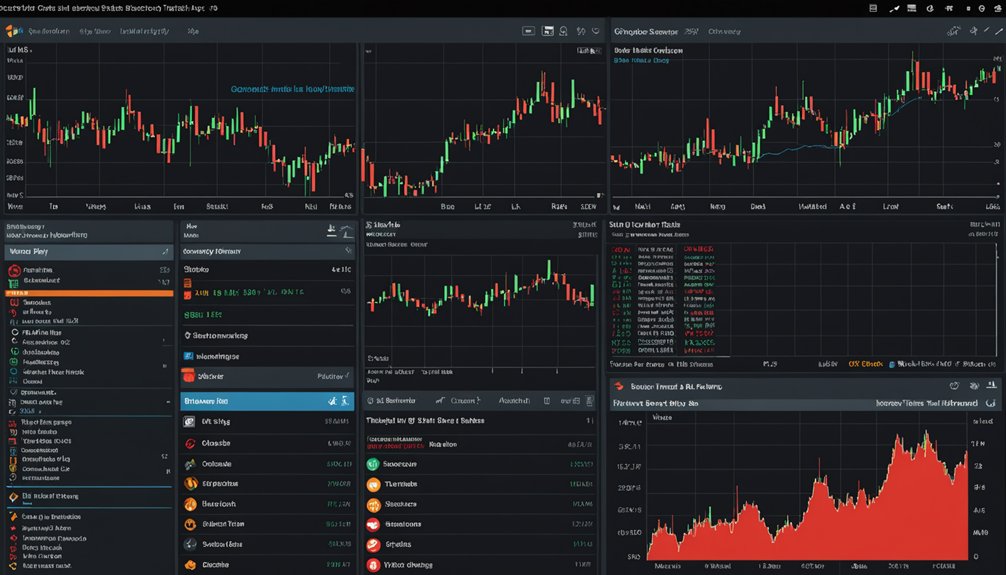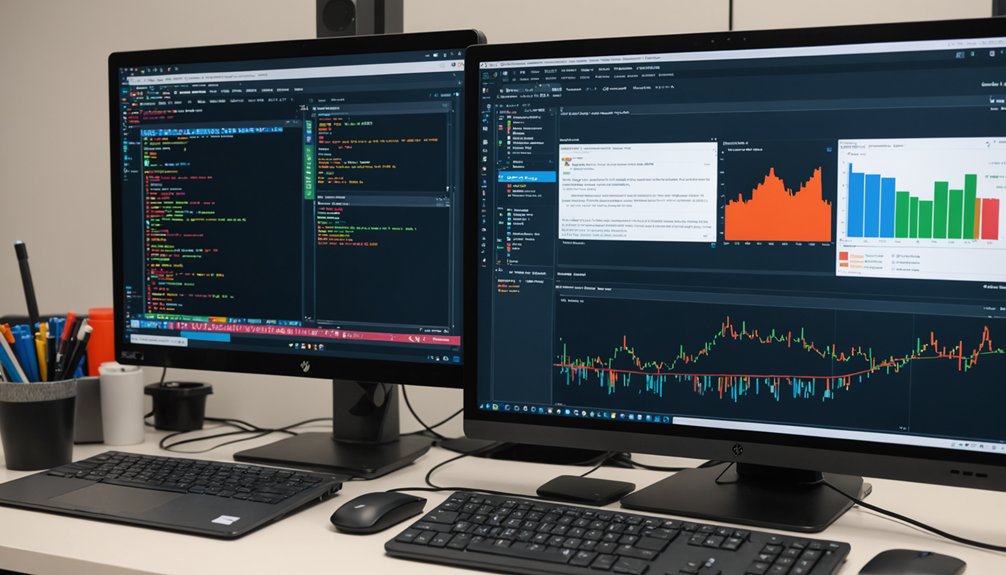A/B testing in Python helps developers make data-driven choices by comparing feature versions. Implementation typically uses Flask to create routes displaying different content to randomly assigned users. Tools like PostHog manage tests and track interactions like "liked_post." Sample size matters—too few users leads to bogus conclusions. Statistical significance separates real results from random chance. A basic example: testing "Submit" versus "Click Me Now!" buttons in a Flask app. These small improvements add up to something big.

Developers face an essential question: is that shiny new feature actually better than the old one? Enter A/B testing – the not-so-secret weapon for making data-driven decisions. It's pretty simple in theory. Two versions of something. Different users see different versions. Track what happens. See which one wins. Done.
A/B testing: where hunches meet hard data, and your brilliant ideas face their moment of truth.
But of course, implementation is never that easy. In Python, the process typically involves web frameworks like Flask, where developers can create applications that serve different content to different user groups. Implementing an A/B test often begins by creating a basic Flask app with routes that can display different versions of content. Random assignment is vital here – can't have all the morning people seeing version A and night owls seeing version B. That would skew results faster than a politician dodges questions. Ensuring proper sample size is crucial for achieving statistical significance in your experiments. The process mirrors the data preparation phase of traditional machine learning workflows, where clean, properly formatted data is essential for reliable results.
PostHog has become a popular tool for Python developers tackling A/B tests. It handles feature flags, which control who sees what, and tracks events like "liked_post" or "abandoned_cart." Basically, it's doing the heavy lifting while developers focus on building the actual features worth testing. Modern AI-powered tools can help analyze the collected data and provide deeper insights into user behavior patterns.
The data side is where things get serious. Sample size matters – a lot. Testing with just ten users is like determining the world's favorite color by asking people in your kitchen. Statistical significance isn't just jargon; it's what separates meaningful results from random chance. Tools like NumPy and Pandas help crunch these numbers, applying tests like chi-squared to determine if differences are real or imaginary.
A typical implementation might look like testing button variants in a Flask app. One group gets the boring "Submit" button, another gets the slightly desperate "Click Me Now!" version. PostHog tracks who clicks what, and the data tells the story.
The beauty of A/B testing in Python is its scalability. Small tests lead to small improvements. Small improvements accumulate. Eventually, the product actually works how users want it to. Revolutionary concept, right?
Frequently Asked Questions
What Sample Size Is Required for Statistically Significant Results?
Sample size requirements vary.
Depends on baseline conversion rates, desired sensitivity, and confidence levels (usually 95%).
For e-commerce with 2-5% conversion rates? Bigger samples needed.
Statistical calculators help.
No universal number exists—it's all math and probabilities.
Higher statistical power demands more participants.
Small effect sizes? Prepare for massive sample requirements.
Bottom line: calculate based on your specific metrics.
One-size-fits-all answers don't exist here.
How Long Should I Run My A/B Test?
A/B tests need a minimum of 1-2 weeks to handle daily fluctuations.
Two business cycles? Even better.
Rushing tests is a rookie mistake.
Thursdays often show higher conversion rates—weird but true.
Traffic volume matters too; more visitors mean faster results.
Cookie deletion becomes an issue in longer tests.
Tests during seasonal events or marketing campaigns? Terrible idea. They'll skew everything.
Statistical significance at 95% confidence is non-negotiable.
Can I Test Multiple Variables Simultaneously?
Yes. Multiple variables can be tested simultaneously through multivariate testing or by running concurrent A/B tests.
Multivariate testing examines element combinations but needs larger sample sizes. The complexity explodes rapidly—even three variables create eight possible combinations. Seriously, it gets unwieldy fast.
Alternatively, run independent A/B tests if the variables don't interact. Just remember: statistical validation becomes trickier with multiple variables.
Tools like Optimizely handle the heavy lifting.
What Metrics Best Indicate True User Preference?
True user preference is best revealed through a mix of metrics.
Conversion rate—nothing shows love like actual purchases. CTR tells you what grabs attention. Low bounce rates? People are sticking around. Time spent on page shows genuine interest.
But stats need context. User feedback adds the "why" behind the numbers. Sometimes what users say they want differs wildly from what they actually click on.
The numbers don't lie.
How Do I Handle Outliers in A/B Test Data?
Outliers in A/B test data can wreck your results. Period.
First, identify them using IQR or standard deviation methods. Visualize with box plots—they don't lie.
Then decide: drop them, cap them, or transform them. Each approach has trade-offs.
Statistical tests like Mann-Whitney U handle non-normal distributions better when outliers lurk. Document whatever method you choose. Transparency matters when someone questions your findings later.




